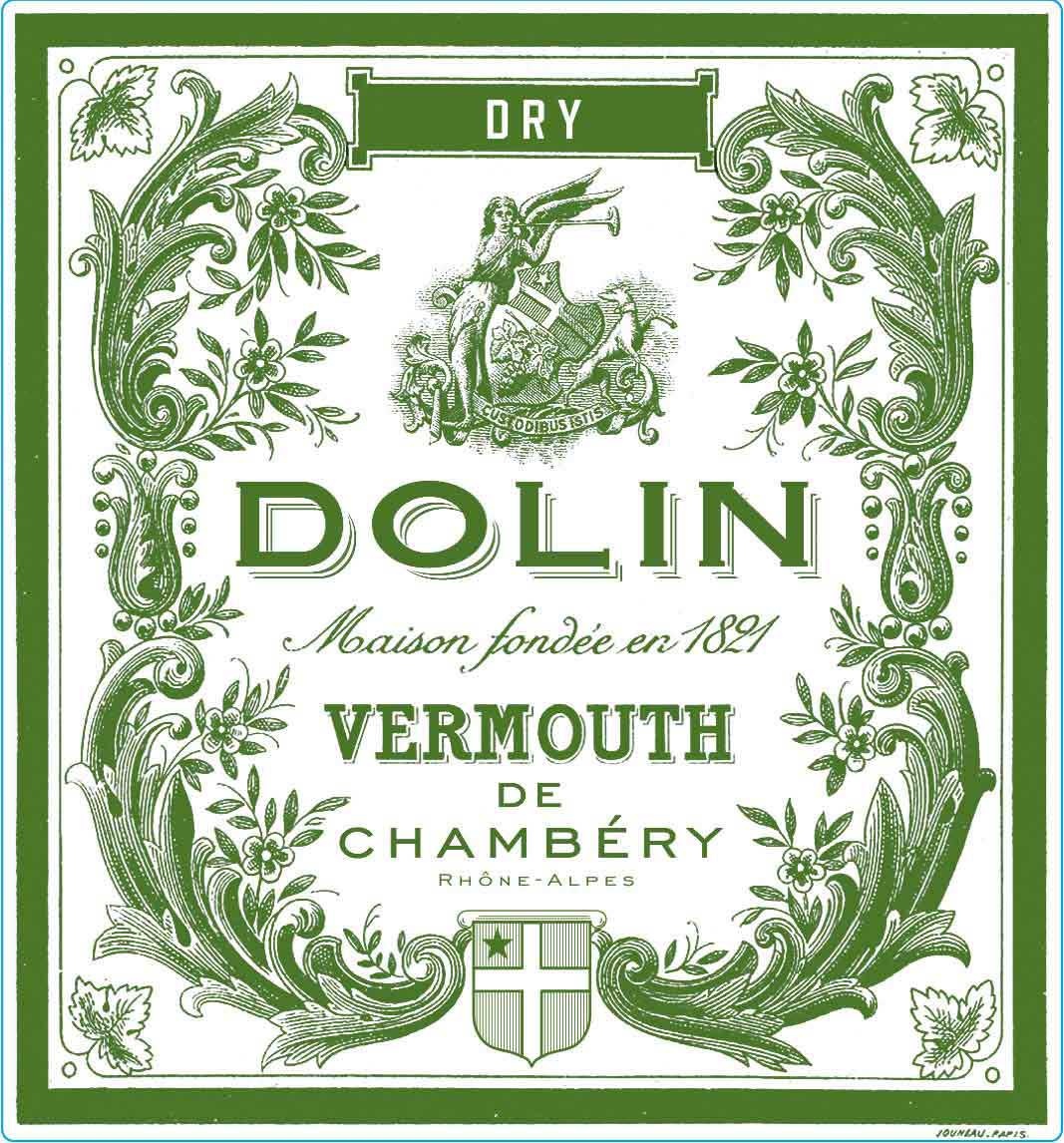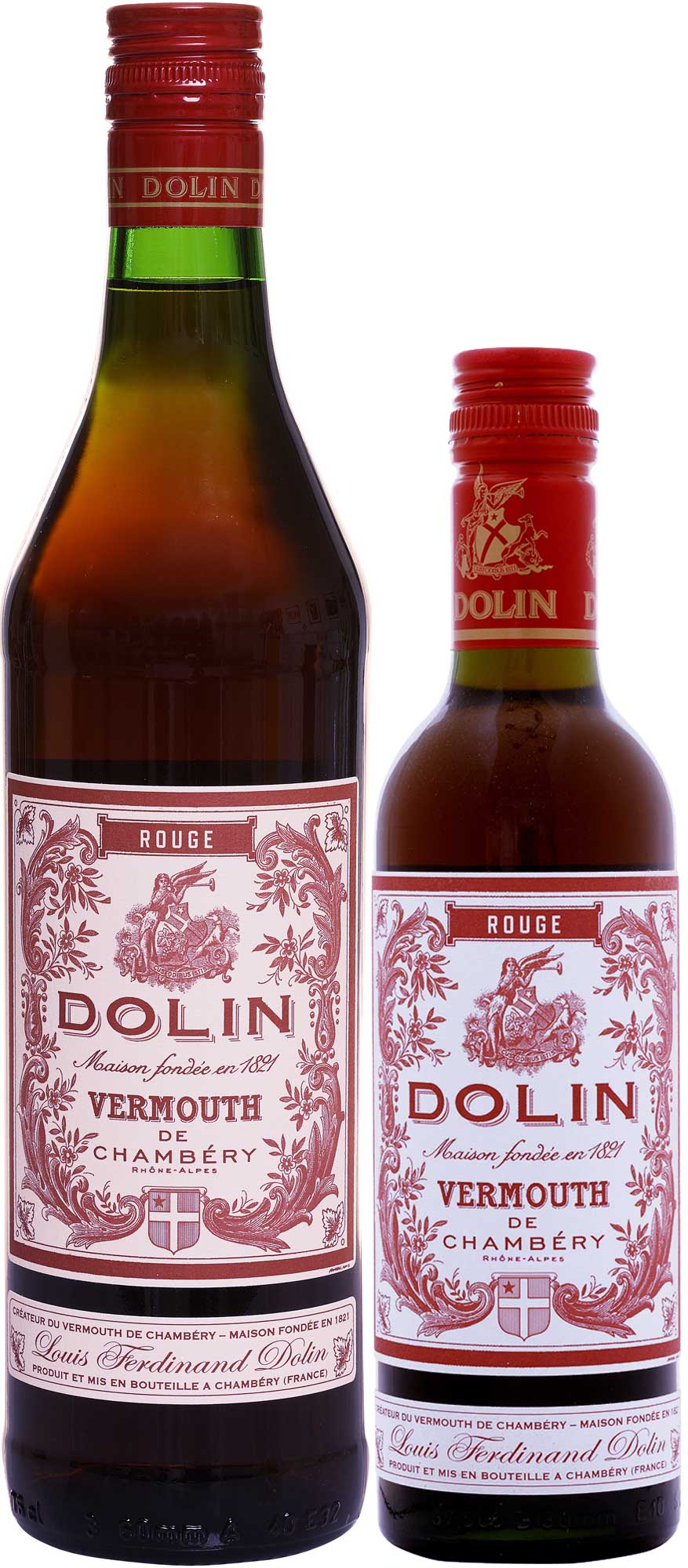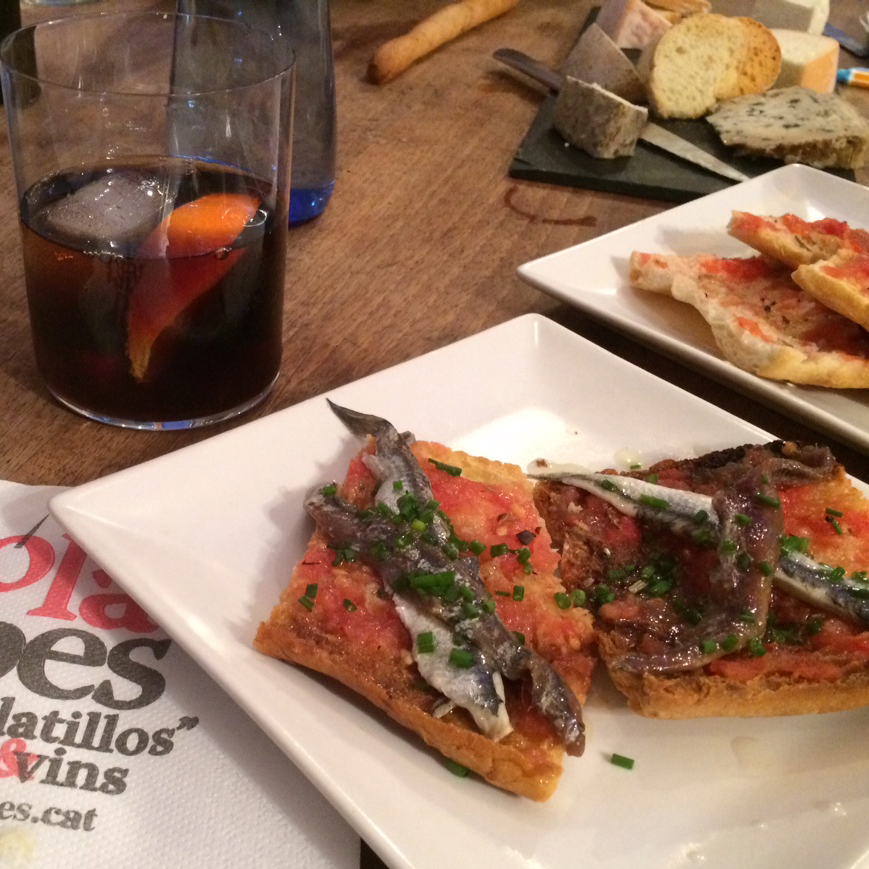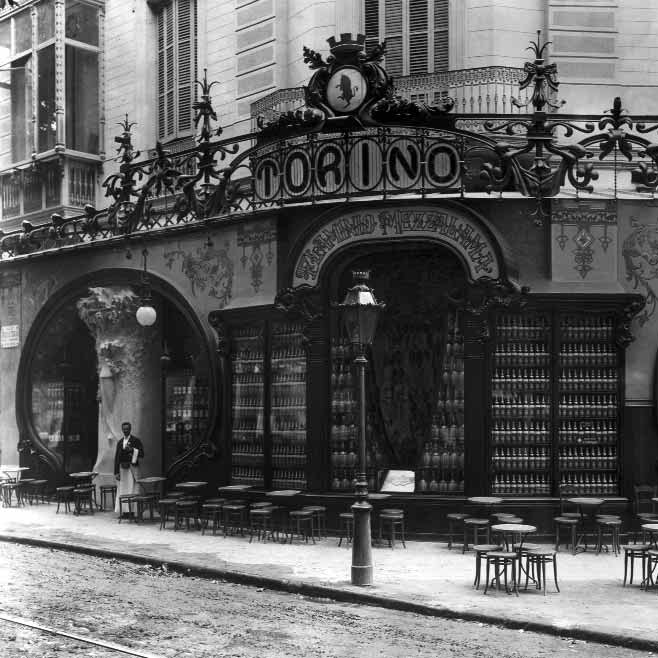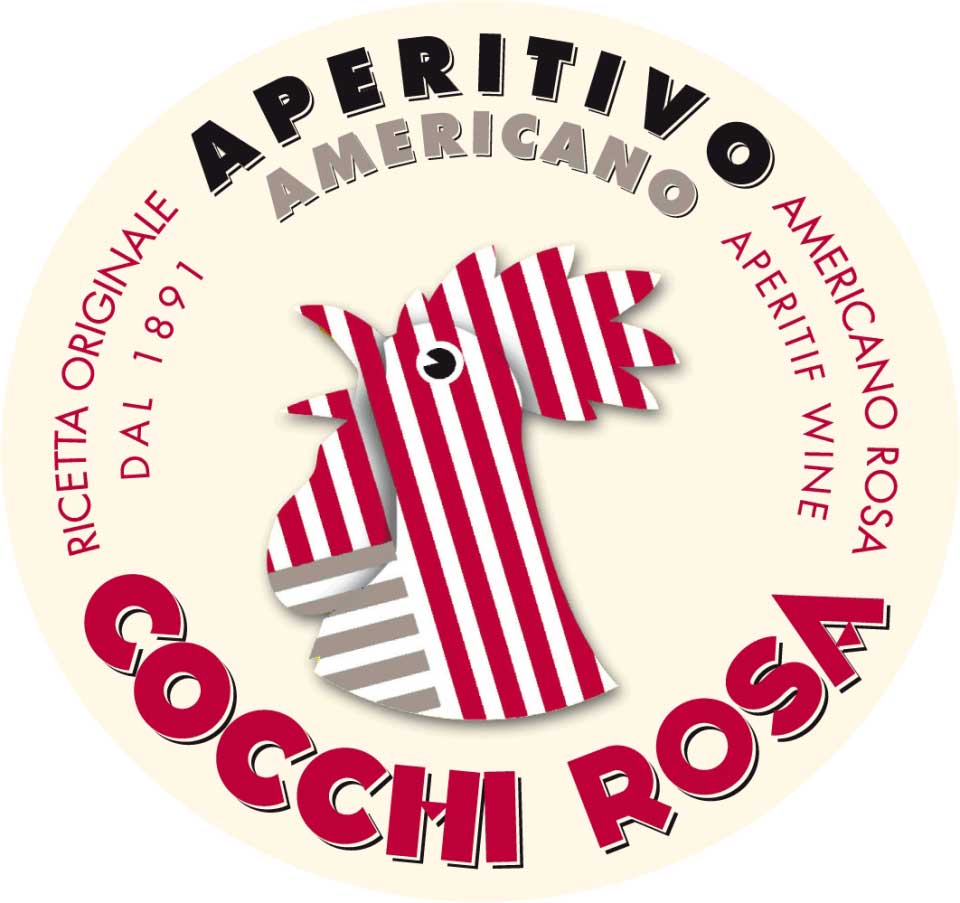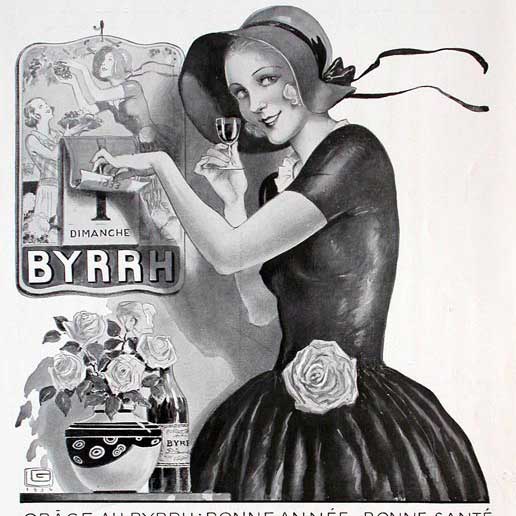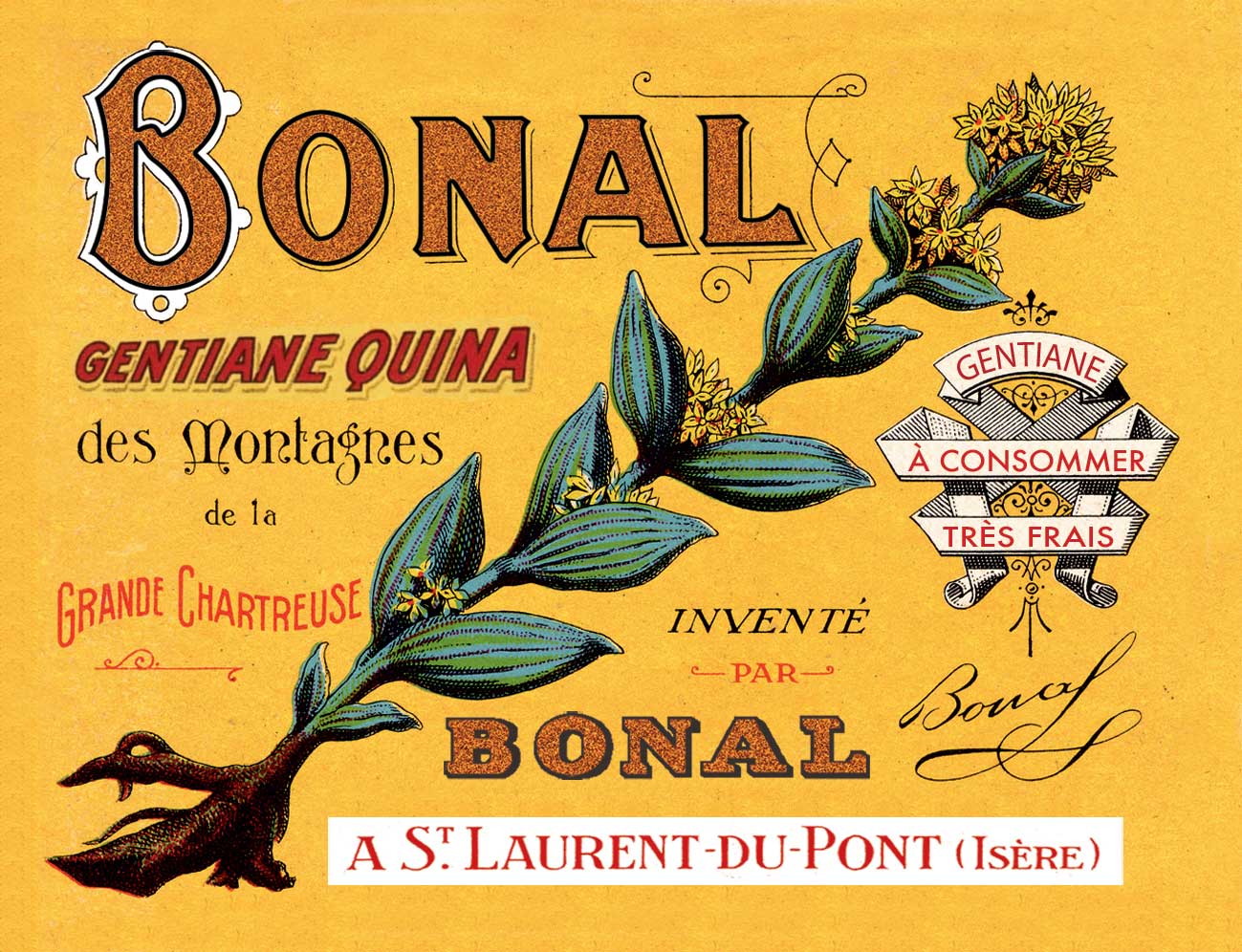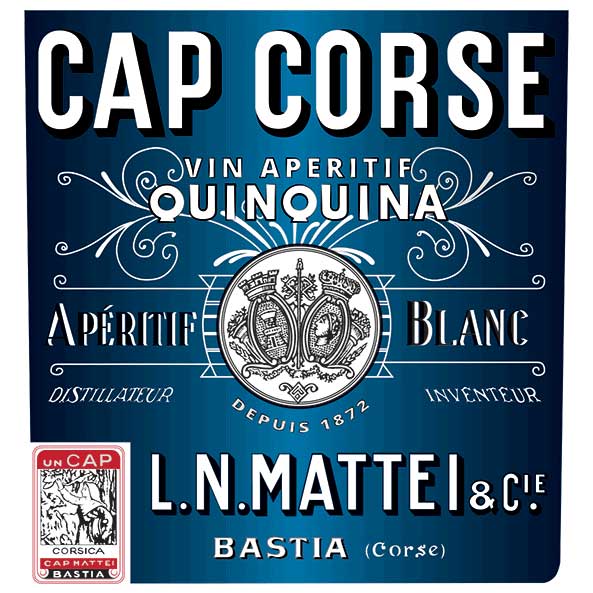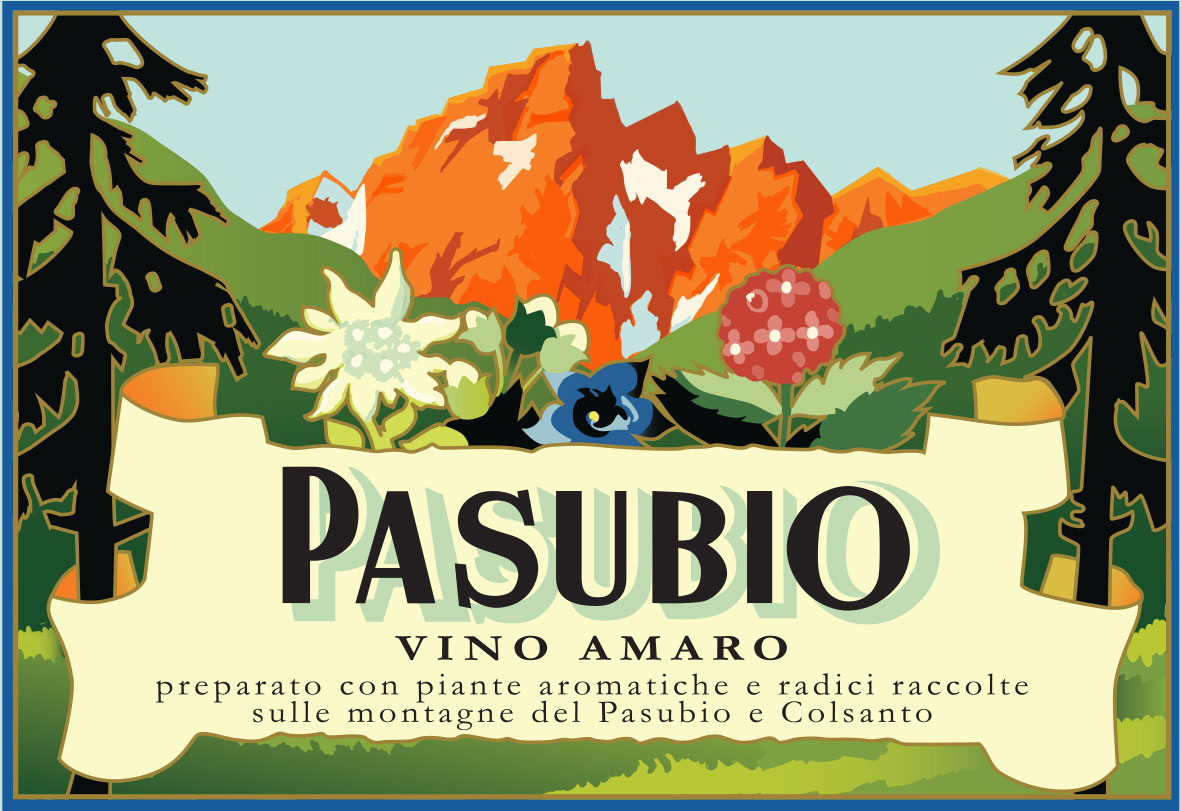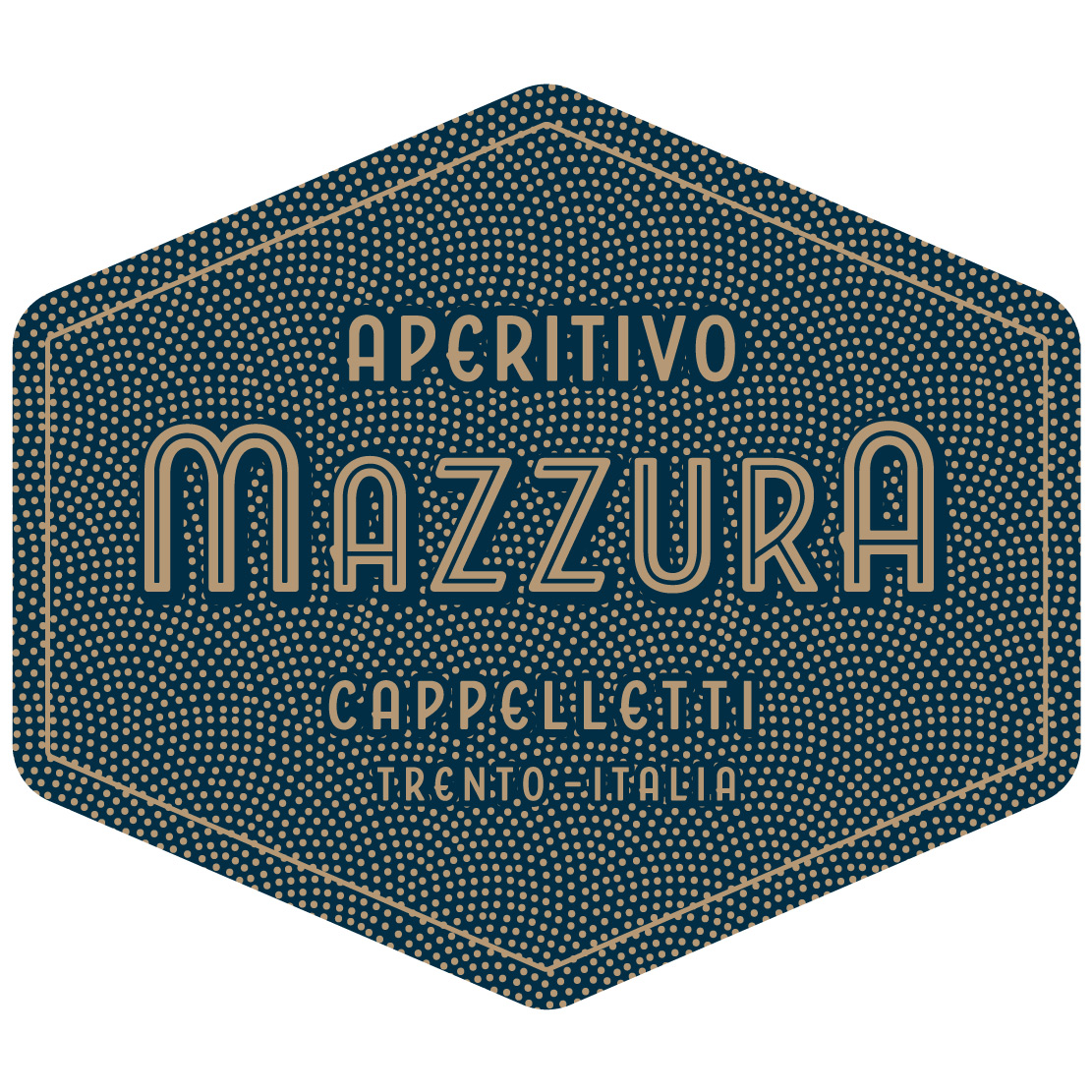Aromatized Wines
Categories: Vermouth, Americano, Quinquina/Chinato, Vino Amaro, Red Bitter Aperitif
Four categories in the world of aromatized wines stand out for their enduring impact on and historical importance to classic drinks. The primary three focus on one specific botanical; wormwood for vermouth, gentian for Americano, and cinchona for quinquina or chinato. Take note these are defined Aromatized Wine categories in the European Union (and in preceding French and Italian laws), so any product labeled as Vermouth, Americano, or Quinquina must be an Aromatized Wine. A wine-based version of the gentian-infused "red bitter" category, such as Cappelletti Aperitivo, is also an aromatized wine.

Vermouth
Vermouth comes from the German word for wormwood—vermut—recalling a Germanic tradition dating to the middle ages. Wormwood (artemisia absinthium) has a weedy, eucalyptus, intensely herbaceous character that attacks both the front and back palate. Infusing wine with wormwood in any meaningful quantity imparts great herbaciousness and a bitter undertone.

Americano
Americano is a play on the name ‘amaricante’, an Italian term for bittered, as well a nod to the ‘American’ way of adding bitters to vermouth. The main botanical, gentian root, has floral, radish and earthy notes, expressed in the middle palate.

Quinquina
French Quinquina and Italian Chinato both have cinchona (quinine—think tonic) as the prime botanical but have different traditions for the wine base. Italian chinato usually uses red wines, while French quinquina has a tradition of using wines or mistelle (fortified grape juice). The chinchona imparts a sweet, flat, drying spice flavor experienced in the back palate.
Vino Amaro
Vino Amaro may use different botanical bases and is often considered the predecessor to the spirit-based products of today.
Keeping These Wines
These are indeed wines, and fortification does not keep them from oxidizing and losing their optimal taste. Because of their fresh wine bases, which by EU and US law must be a minimum of 75% wine, all aromatized wines are best kept chilled once opened and used within 1 to 2 weeks of opening. If in doubt about an aperitif wine’s condition, let your nose be your guide, just as you would with any still wine.
Vermouth
Dolin Dry Vermouth de Chambéry
17.5% ABV
Dolin Dry is distinguished by its light, fresh and clean profile, which comes from a delicate wine base and more than thirty Alpine herbs. From its start in 1821, Dolin Vermouth de Chambéry has been the benchmark for fine French Vermouth. Its fresh and elegant nose, subtle and complex palate is the profile that made the 1:1 gin/dry vermouth Martini famous, and so often imitated by others. In the 1930s Chambéry earned France’s only protected designation of origin for Vermouth. Beyond mixed drinks, it is an ideal aperitif or accompaniment to raw shellfish, goat cheese or pesto. In cooking, Dolin Dry adds depth and an herbal character that normal white wine cannot.
Full detailsDolin Blanc Vermouth de Chambéry
16.0% ABV
The sweet, pale ‘Blanc’ variety of vermouth was first created and made famous by Dolin in Chambéry long before Italian producers replicated the style as ‘Bianco’. The Blanc is traditionally served with a sliced strawberry, a splash of soda and a twist. Dolin blanc’s elegance and slight vanilla edge marry beautifully in the ‘new classic’ Blond Negroni. In other cocktails, Dolin Blanc pairs well with blanco tequila or other flavorful clear spirits. It is ideal for infusions of melon or other fruit, and an appetizing accompaniment to a wide variety of cheeses.
Full detailsDolin Rouge Vermouth de Chambéry
16.0% ABV
Dolin Rouge imparts lovely spicy notes amid its light and fresh profile, with a clean finish to complement and not overwhelm a drink’s other components. More than fifty herbs flavor Dolin Rouge; its profile is firm and balanced, without the excessive sweet or lingering aftertastes found in large commercial products. It makes for an exceptional Manhattan that does not bury the tastes of rye or bourbon, even at classic 1:1 proportions. Refreshes a Negroni, too. Dolin Rouge and a twist pairs well with charcuterie or black olives and works perfectly in tomato or meat cookery.
Full detailsComoz Blanc Vermouth de Chambéry
16.0% ABV
Established in 1856, Comoz was the second-oldest of Chambéry vermouth producers after Dolin and the first to produce in a crystal-clear style. (Dolin preceded with a sweet pale, rather than crystal clear, blanc vermouth.) Introduced in 1881, Comoz Vermouth Blanc expressed Claudius Comoz’s selection of wines, plants, and fruits, many from the hills above Chambéry. Comoz came to fame as the essential vermouth in the El Presidente cocktail in Cuba. Less sweet than other vermouth blanc, with notes of stone fruits, alpine flowers, and a deep, resonant undercurrent of wormwood—a profile that marries with whiskey better than any other pale vermouth.
Full detailsChambéryzette Strawberry Aperitif
16.0% ABV
Chambéryzette is a palate-pleasing aperitif that captures the aromatics, acidity and delectable flavors of wild alpine strawberries. It’s exceptionally versatile and adds a vivid, balanced strawberry profile to drinks like a spritz, vodka soda, Martini, or a wild strawberry Negroni. It stands apart from the simplistic and overbearing sugariness of other French strawberry aperitifs and liqueurs. This specialty of Dolin, first created by Rosalie Dolin in 1902, draws its qualities from strawberries of France’s Auvergne-Rhône-Alpes region on a base of Vermouth de Chambéry.
Full detailsTimbal Vermut de Reus Extra Dry
Spain ➜ Catalunya ➜ Vermut de Reus 17.0% ABV
17.0% ABV
This vermouth has a distinctly Catalan character, and embodies many of the savory flavors found in the famed olives of the region. Truly dry—with no added sugar—it is made with herbs sourced from the Pyrenees mountains and citrus of the Mediterranean. Its wine base of Airén (La Mancha) and Macabeo (Penedes) adds a nice minerality. Enjoy neat, with a splash of tonic, or in a 1:1 Martini. The town of Reus (near Tarragona in Catalonia) is the historic epicenter for vermouth production in Spain, where for over a century the producer Miró has set the benchmark for its wormwood-forward style.
Full detailsTimbal Vermut de Reus Sweet Red
Spain ➜ Catalunya ➜ Vermut de Reus 15.0% ABV
15.0% ABV
This well rounded and wormwood-forward sweet red vermouth has earned great admiration. Its easy style is ideal for the Catalan tradition of the ‘vermouth hour’, enjoying a glass on the rocks with olives. Timbal Sweet Red also marries beautifully with rye or bourbon, revealing notes of baking spices. The town of Reus (near to Tarragona in Catalonia) is the historic epicenter for vermouth production in Spain, where for over a century the producer Miró has set the benchmark for its wormwood-forward style.
Full detailsCocchi Vermouth di Torino Extra Dry
Italy ➜ Piemonte ➜ Vermouth di Torino DOP 17.0% ABV
17.0% ABV
Giulio Cocchi brings its unique expression of Piemontese grapes to the world of dry vermouth. Cocchi Extra Dry Vermouth di Torino combines the freshness of a Cortese wine base with local mountain wormwood, Menta di Pancalieri peppermint, and lemon over a backbone of angelica, coriander, and cardamom. Use Cocchi Extra Dry in a Martini with robust gins, or spritz with tonic water. The silky vinous texture of Cocchi Extra Dry is ideal for classic whiskey cocktails that call for dry vermouth, such as the Old Pal and the Scofflaw. At aperitif hour, Cocchi Extra Dry is ideal to pair with young cheeses.
Full detailsCocchi Vermouth di Torino ‘Storico’
Italy ➜ Piemonte ➜ Vermouth di Torino DOP 16.0% ABV
16.0% ABV
The last remaining example of appellation Vermouth di Torino to comply with all of the classical requirements, Cocchi Vermouth di Torino ‘Storico’ has been produced since 1891. Cocchi uses estate Moscato as the wine base, and vibrant, spicy botanicals such as cocoa, citrus, ginger, and rhubarb. In contrast with other popular Italian vermouths, Cocchi Vermouth di Torino ‘Storico’ retains wines of Piedmont as the base and avoids a heavy sheen of vanilla that clashes with other cocktail ingredients. Vermouth di Torino stands apart as one of only two protected geographical indications of origin for vermouth, and is the style referenced by classic cocktail books when discussing “Italian vermouth.”
Full detailsCocchi “Dopo Teatro” Vermouth Amaro
16.0% ABV
The name ‘Dopo Teatro’ refers to the late-evening, “after theater” service at restaurants and cafes in Torino, a gathering time for a sip of something bittersweet and maybe a small bite to eat. This “vermouth amaro” (vermouth with additional bitter elements) starts with the Moscato-based Cocchi Storico Vermouth di Torino, to which winemaker Giulio Bava adds robust Nebbiolo wine, local gentian, rhubarb root, chiretta and quinine. The result is a robust amaro that retains the refreshing acidity of the original vermouth. Ideal for cask strength or peated whiskeys as well as mezcal or gin, or pairing with spicy salami or intense chocolate preparations.
Full detailsAmericano
Cocchi Americano Rosa
16.5% ABV
Throughout its history, Giulio Cocchi has used the aperitif wine Americano profile to highlight the fine aromatic grapes of Piemonte. In Cocchi Americano Rosa, the Brachetto d’Acqui wine base provides the white rose and rich berry notes typical of the famous sparkling wine of the same variety, while the addition of rose and ginger to the traditional bitter base provides a rounder profile.
Full detailsCocchi Americano Bianco
16.5% ABV
Made to the same recipe since 1891, this Moscato-based aperitif wine has long been a staple of Asti. While the Americano name implies a gentian focus, the wine also includes quinine and citrus for a flavorful, refreshing profile. In Piemonte it is served chilled with ice, a splash of soda and a peel of orange. Cocchi Americano Bianco’s combination of fruit, spice and bitter undertones can perfect a number of classic mixed drinks. This same profile makes it splendid pairing with all kinds of pickles, nuts, charcuterie and cheeses.
Full detailsQuinquina/Chinato
Byrrh Grand Quinquina
France ➜ Roussillon 18.0% ABV
18.0% ABV
Byrrh Grand Quinquina is made to the original late-19th century recipe that earned worldwide fame and inspired fifty years of evocative poster art. Byrrh combines a generous, port-like wine and mistelle base with a firm backbone of natural quinine to produce a fruity, refreshing aperitif by itself, with tonic and a twist, or paired with blue cheese. In cocktails, Byrrh mixes well with vodka, gin, cognac, tequila, Irish whiskey, and grapefruit. Byrrh is produced in Thuir, in the heart of French Catalan territory, near the coast and border with Spain.
Full detailsCocchi Barolo Chinato
16.5% ABV
Renowned in Piemonte since its introduction in 1891, Cocchi Barolo Chinato is a wine of DOCG Barolo infused with quinine bark, rhubarb, ginger, cardamom, cocoa, and a variety of other aromatic spices. Round and rich, yet with the deep back palate one expects of Barolo, this wine possesses the definition necessary to be an ideal digestif or pairing with dark chocolate. Serve as you would a high-quality port or Madeira, or use in lieu of sweet red vermouth in a luxurious Manhattan. You would not be alone in finding this to be the Rolls Royce (or Maserati) of Italian dessert wines.
Full detailsBonal Gentiane-Quina
16.0% ABV
Since 1865, this spicy, earthy aperitif has been known as “ouvre l’appétit” - the key to the appetite. Serious in its role as an aperitif, and then popular with sportsmen, Bonal became an early sponsor of the Tour de France. It is made by an infusion of gentian, cinchona (quinine) and renowned herbs of the Grande Chartreuse mountains in a mistelle base. While tradition is to drink neat with a twist, Bonal also mixes well with fresh or hard cider, sparkling wine, and Scotch or American whiskies. Excellent with hard, salty cheeses, salted nuts, or earthy, spicy foods.
Full detailsMattei Cap Corse Blanc
17.0% ABV
A true Quinquina Blanc, and unique among aperitif wines. The profile of the Cap Corse Mattei BLANC aperitif wine is defined by its distinctly Corsican components. Its all-mistelle base is of Vermentinu and Muscat Petit Grains, lending a terrific minerality, acidity and floral tones. The local Cedrat (aka citron) adds unique citrus aroma and a silky texture. Since its creation in 1872 by Louis-Napoléon Mattei, Cap Corse Mattei is the oldest and best known aperitif of Corsica. Still today family owned, and all macerations, aging and bottling are done in house.
Full detailsMattei Cap Corse Rouge
17.0% ABV
Among the most famous of French Quinquina, enjoyed for generations by visitors and residents of the Island of Corsica. It is composed of a variety of distinctive and aromatic spices, walnuts and cinchona bark on a base of Corsican Muscat and Vermentinu mistelles. The result is an aperitif of tremendous depth with a wonderfully dry finish. Traditionally served neat or on ice with tonic or soda. It mixes well with rye whiskey, apple brandy or brandy. Since its creation in 1872 by Louis-Napoléon Mattei, Cap Corse Mattei is the oldest and best known aperitif of Corsica. Still today family owned, and all macerations, aging and bottling are done in house.
Full detailsVino Amaro
Pasubio Vino Amaro
Italy ➜ Trentino-Alto Adige 17.0% ABV
17.0% ABV
Pasubio is a true taste of the Dolomite Mountains in the Trentino region. On a base of rich aged wine you’ll find notes of blueberries, pine and smoke, together with bitter alpine herbs. It is rare among amari to feature mountain berries. The recipe from Giuseppe Cappelletti dates back to the early 20th century and is among the Erboristeria’s first amari. Traditionally enjoyed neat, typically at cellar temperature or chilled. Pasubio makes simple and delicious spritzes with tonic, soda, sparkling lemonade, or bitter lemon. Also pairs well in mixed drinks with bourbon, rye, or brandy.
Full detailsElisir Novasalus
Italy ➜ Trentino-Alto Adige 16.0% ABV
16.0% ABV
Perhaps the most earnest of digestivi, Elisir Novasalus is revered in Alto Adige and regions beyond. Made by an Erboristeria (master of botanicals) and trader in wines, it combines in a six-month process the plants from the surrounding high alps (Alto Adige) with a dry Marsala and a unique tree sap of Sicily. The resulting amaro is bold, bitter and exceptionally complex, with layers upon layers of flavor. Famously comforting after a large meal. While not traditionally mixed, it is nicely followed by a small glass of sparkling wine. Unrivalled in its palate effect, it makes for a perfect finish to a meal.
Full detailsCardamaro Vino Amaro
17.0% ABV
Cardamaro is a longstanding product of what is today an 8th-generation winemaker in Canelli d’Asti. The primary flavors of Cardamaro are cardoon and blessed thistle, with gentle undertones of spice. The wine base provides a pleasing texture and allows for pairing with robust cheeses, soft or hard. Mix Cardamaro with cider or ginger ale, or use in place of vermouth for an earthier take on classic cocktails. Cardamaro can also be used in place of whiskey for subtle cocktails, such as with Dolin Rouge in the Lower Manhattan.
Full detailsNegroni Insorti
Italy ➜ Trentino-Alto Adige 17.0% ABV
17.0% ABV
Negroni Insorti (‘insurgents’) is at once as familiar as it is unexpected. It is a Negroni cocktail made in a singular construction, from raw ingredients to a finished product—every last detail is deliberate. It features the primary botanicals of its namesake: citrus peels, gentian, wormwood, and juniper, with fruits and flowers providing the color. Wine-based, and vegan-friendly. Enjoy over ice with an orange twist. Negroni Insorti is made just outside of Trento in Alto Adige by the Cappelletti family, who also produce a number of exceptional aperitivi and amari.
Full detailsRed Bitter Aperitif
Aperitivo Cappelletti
Italy ➜ Trentino-Alto Adige 17.0% ABV
17.0% ABV
The Aperitivo Cappelletti, endearingly known to locals as just “Specialino”, may be the oldest style of the classic red bitter still in production. Unlike its larger commercial rivals, Cappelletti is less sweet and has a wonderful drying finish. Additionally, it still uses natural carmine color for a crimson red and retains a vinous texture from its wine base. It offers a vibrant and flavorful profile, complemented by bitter undertones on a traditional wine base. This yields a Negroni or Spritz that is dry and refreshing in the finish. It is made just outside of Trento in Alto Adige by the Cappelletti family, who also produce a number of other exceptional aperitivi and amari.
Full detailsAperitivo Mazzura
Italy ➜ Trentino-Alto Adige 17.0% ABV
17.0% ABV
Aperitivo Mazzura distinguishes itself in both its multidimensional flavor and stunning fuchsia color. Botanicals are sourced from Dolomite hills and valleys in Italy's Triveneto region, birthplace of the spritz. Mazzura's color comes from a unique blend of flowers and fruits that is entirely natural and vegan-friendly. Try Mazzura in a Negroni, Boulevardier or Spritz. It is made just outside of Trento in Alto Adige by the Cappelletti family, who also produce a number of other exceptional aperitivi and amari.
Full details

